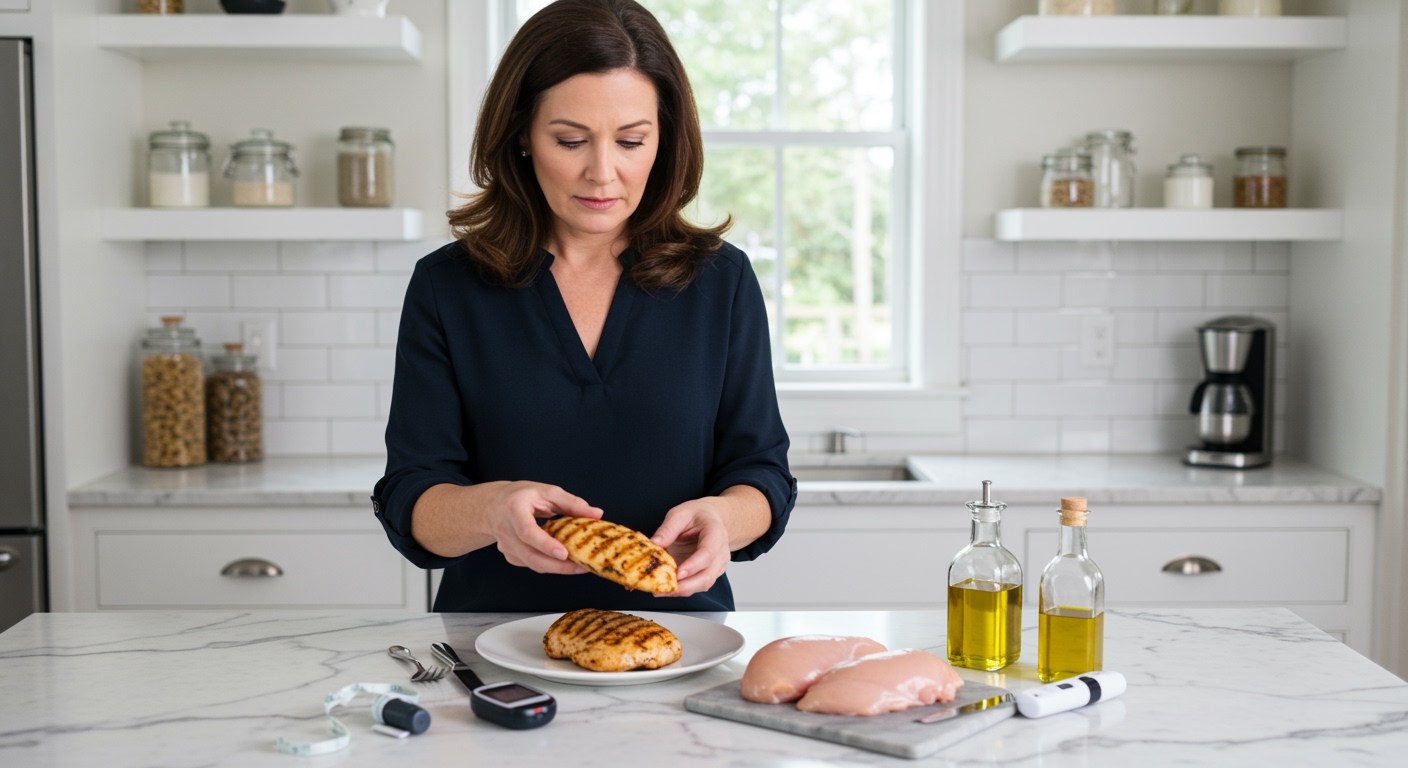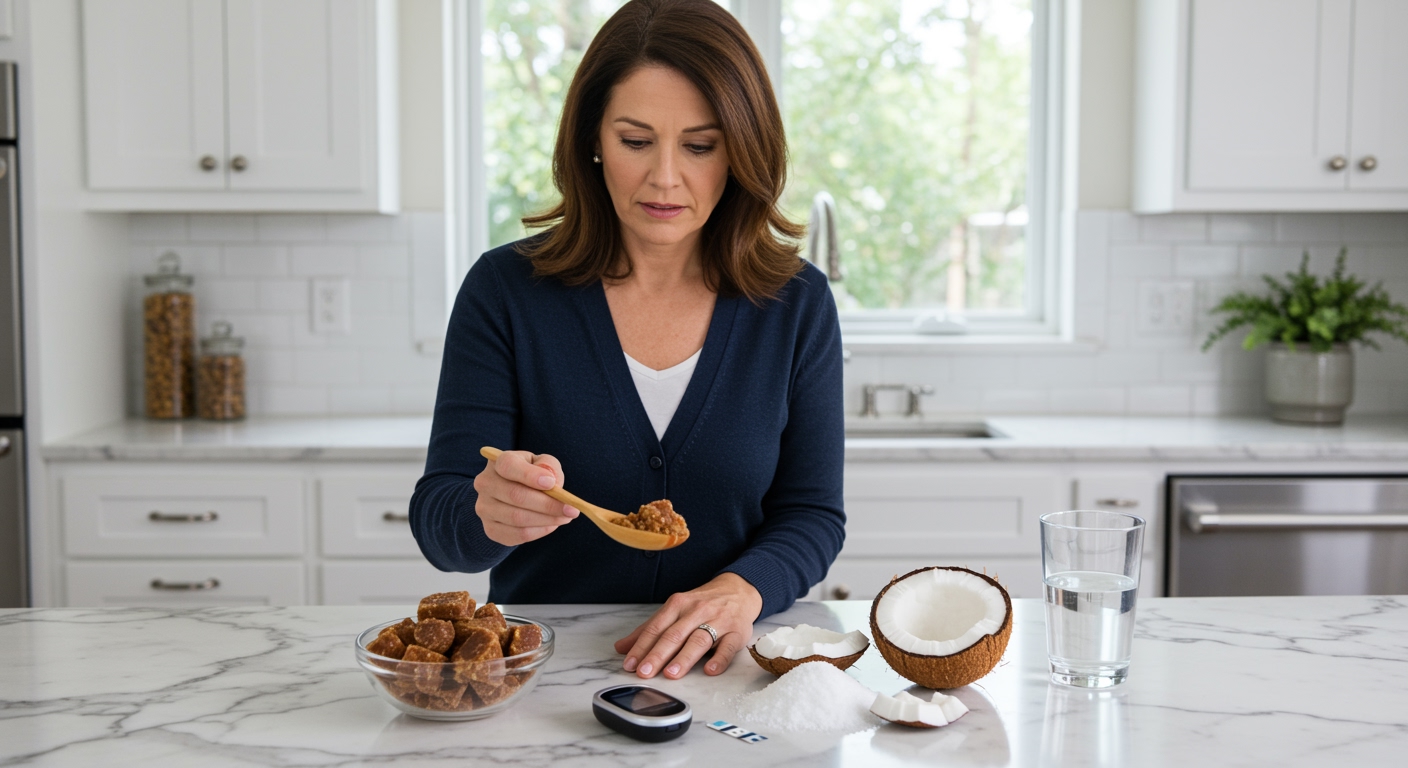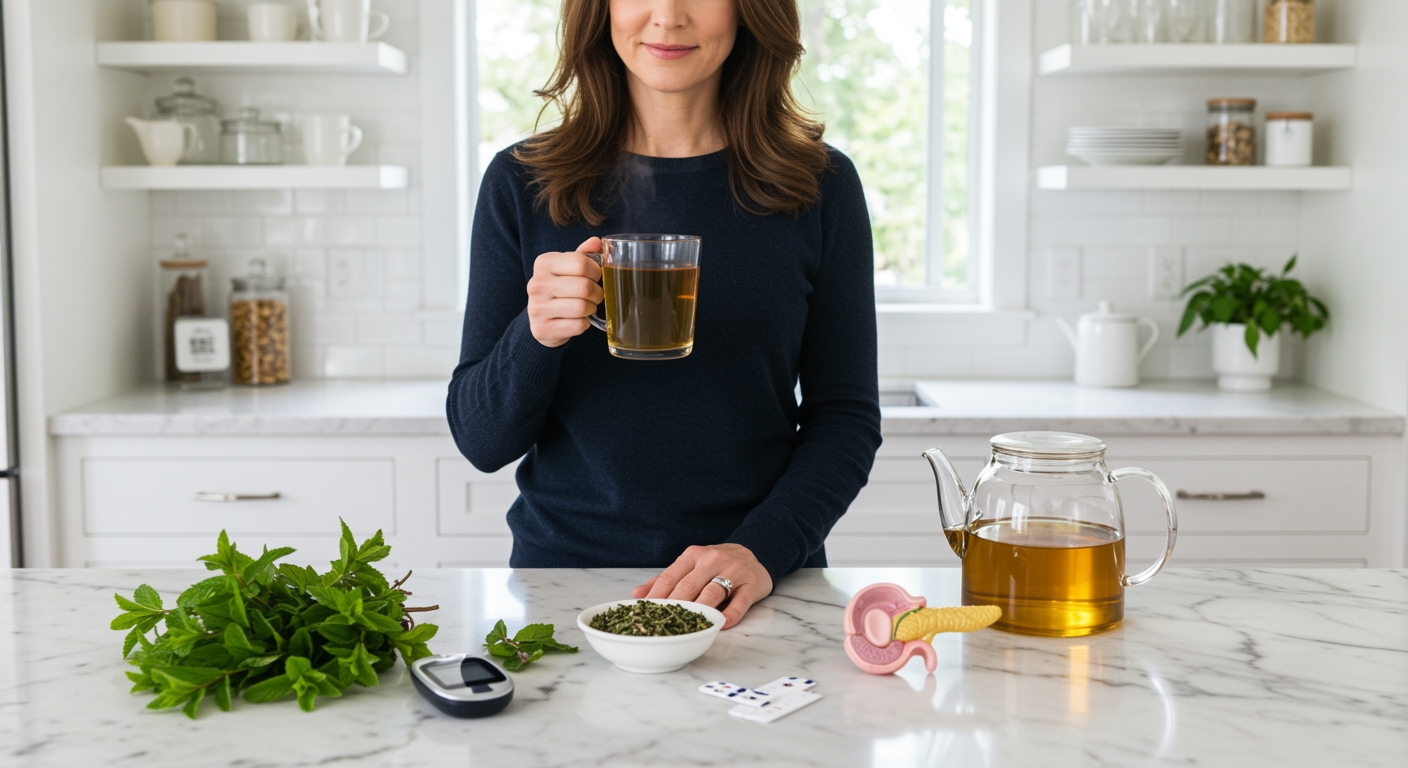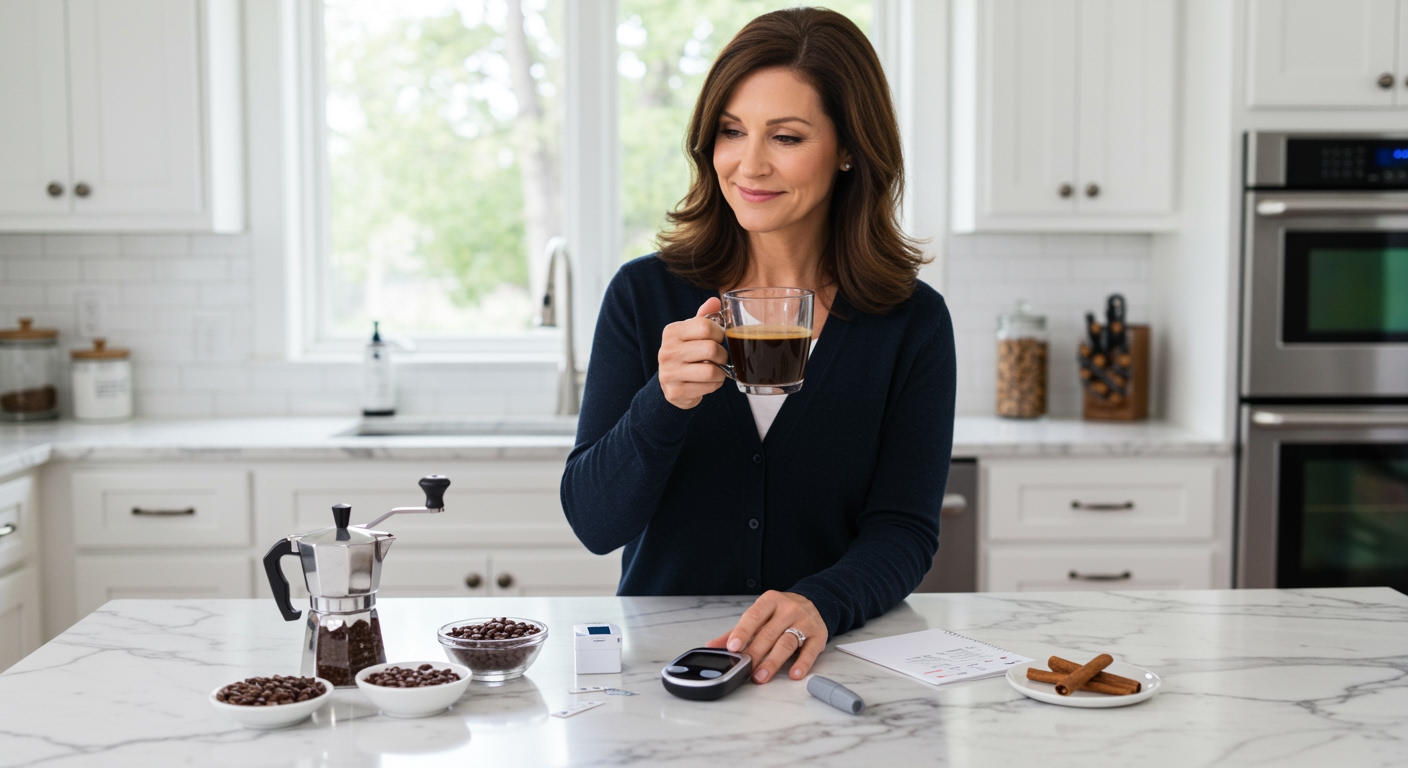✪ Key Takeaway: Grilled chicken is good for diabetes when cooked properly, but high-heat grilling creates harmful compounds that may worsen blood sugar control.
Introduction
Your doctor tells you to eat more protein and less carbs to manage your diabetes.
You fire up the grill and throw on some chicken breasts thinking you are making the perfect diabetic meal.
But what if I told you that your grilling method might actually be working against your blood sugar goals? Hi, I am Abdur, your nutrition coach and today I am going to explain whether grilled chicken is truly good for diabetes and how cooking methods can make or break your glucose control.
Does Grilled Chicken Raise Blood Sugar?
Chicken itself has a glycemic index of zero because it contains no carbohydrates.
This means plain chicken should not directly spike your blood glucose levels.
However, the story becomes more complex when we consider how grilling affects the meat at a molecular level.
High-temperature cooking methods like grilling create compounds called advanced glycation end products or AGEs.
These AGEs can trigger inflammation in your body and potentially worsen insulin resistance over time.
Research shows that people with diabetes who consume high levels of AGEs have poorer blood sugar control compared to those who eat foods with lower AGE content.
✪ Pro Tip: Marinate chicken in acidic ingredients like lemon juice or vinegar before grilling to reduce AGE formation by up to 50%.
What Makes Grilled Chicken Risky For Diabetics?
The main concern with grilled chicken for diabetics lies in the cooking temperature and duration.
When chicken is exposed to direct high heat above 300 degrees Fahrenheit, it forms heterocyclic amines and polycyclic aromatic hydrocarbons.
These compounds not only increase cancer risk but also promote oxidative stress in your body.
Oxidative stress damages your cells and makes it harder for insulin to work effectively.
Additionally, many people add sugary marinades or barbecue sauces to their grilled chicken.
These additions can contain 10-15 grams of sugar per serving, which will definitely spike your blood glucose levels.
The combination of harmful cooking compounds and hidden sugars makes improperly prepared grilled chicken a poor choice for diabetes management.
✪ Fact: Charred or blackened parts of grilled chicken contain the highest concentrations of harmful compounds that worsen diabetes.
How Should Diabetics Cook Chicken Safely?
The good news is that you can still enjoy chicken while managing your diabetes effectively.
The key lies in choosing lower temperature cooking methods that preserve the protein benefits without creating harmful compounds.
Baking chicken at 350 degrees Fahrenheit or below produces significantly fewer AGEs compared to high-heat grilling.
Poaching and steaming are even better options because they use moist heat instead of dry heat.
If you must grill, keep the temperature moderate and avoid cooking until the meat is charred or blackened.
Pre-cooking chicken partially in the microwave for 2-3 minutes before grilling can reduce cooking time and harmful compound formation.
Always flip the chicken frequently to prevent one side from getting too hot and creating more AGEs.
✪ Note: Using a meat thermometer ensures chicken reaches 165°F internal temperature without overcooking and creating excess AGEs.
What Are The Best Chicken Seasonings For Diabetes?
Seasoning your chicken properly can actually help improve your blood sugar control.
Herbs and spices like oregano, rosemary, and thyme contain antioxidants that fight inflammation and may improve insulin sensitivity.
Cinnamon is particularly beneficial for diabetics because it can help lower blood glucose levels when consumed regularly.
Garlic and turmeric also have anti-inflammatory properties that support better diabetes management.
Avoid commercial seasoning blends that often contain hidden sugars, corn syrup, or high amounts of sodium.
Instead, create your own sugar-free marinades using olive oil, lemon juice, and fresh herbs.
These natural seasonings add flavor without compromising your blood sugar goals or adding unnecessary calories.
✪ Pro Tip: Add fresh herbs during the last few minutes of cooking to preserve their antioxidant properties and maximize health benefits.
How Much Chicken Should Diabetics Eat Daily?
Portion control remains crucial for diabetes management even with healthy proteins like chicken.
A proper serving size of chicken for diabetics is about 3-4 ounces, which is roughly the size of your palm.
This amount provides approximately 25-30 grams of high-quality protein without excessive calories.
Eating too much protein at once can actually cause a mild increase in blood glucose through a process called gluconeogenesis.
Your liver can convert excess amino acids from protein into glucose when needed.
Spreading your protein intake throughout the day helps maintain steady blood sugar levels and supports better insulin function.
Pair your chicken with non-starchy vegetables and a small portion of complex carbohydrates for a balanced diabetic meal.
✪ Fact: Eating protein with carbohydrates can slow down carb absorption and prevent rapid blood sugar spikes in diabetics.
The Bottom Line
Grilled chicken can be part of a healthy diabetes diet when prepared correctly using moderate temperatures and avoiding charred surfaces.
Health is not about perfection but about making better choices consistently, and choosing safer cooking methods is one of those better choices you can make today.
I would love to hear about your favorite ways to prepare chicken for diabetes management, so please share your experiences and questions in the comments below.
References
At NutritionCrown, we use quality and credible sources to ensure our content is accurate and trustworthy. Below are the sources referenced in creating this article:
- Harvard Nutrition Source: How Meat is Cooked May Affect Risk of Type 2 Diabetes
- Glycemic Index Net: Chicken Glycemic Index
- January AI: Does Chicken Raise Blood Sugar Levels
- Renal and Urology News: Grilled Meats Increase Type 2 Diabetes Risk





